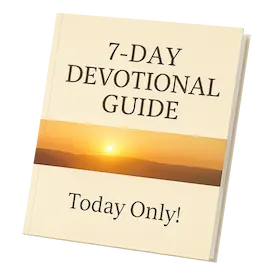The Structure and Content of Exodus
Trying to break down the Book of Exodus can feel a bit like organizing a garage stuffed with everything from power tools to Christmas decorations—it’s a lot. But when you step back, it’s surprisingly well-ordered. The book unfolds like a three-act drama: the tribes of Israel are stuck, they get unstuck, and then they figure out what to do next (with plenty of missteps along the way).
The Israelites in Egypt (Chapters 1–12)
The story kicks off with the Israelites in a tough spot. They’ve gone from being Jacob’s descendants to Pharaoh’s workforce. The new king of Egypt, who clearly skipped the history lessons about Joseph saving the day, decides the Israelites are too numerous and too much of a threat. His solution? Brutal slavery and a horrifying order to kill all newborn Hebrew boys. Enter Moses, a baby who escapes Pharaoh’s decree in a tiny basket. Fast forward, and Moses grows up, gets into some trouble, flees to the wilderness, and has a chat with God at a burning bush. Casual.
God sends Moses (and his brother, Aaron, because Moses isn’t great at public speaking) to deliver a message: “Let my people go.” Pharaoh, being Pharaoh, says no. What follows is a back-and-forth showdown of plagues—frogs, locusts, boils, blood—you name it. Pharaoh eventually caves after the final plague, the death of Egypt’s firstborn sons. This led to the first Passover, an event so significant that it has shaped Jewish tradition to this day. With that, the tribes of Israel pack up and head out, leaving Egypt in chaos.
Journey to Mount Sinai (Chapters 13–18)
The escape from Egypt doesn’t mean smooth sailing—literally. The Israelites hit the Red Sea, and Pharaoh had a change of heart, sending his army after them. What happens next is one of the Bible’s most iconic moments: Moses parts the sea, and the tribes of Israel walk through on dry land. The Egyptians? Not so lucky.
From there, it’s a long trek through the wilderness. And let’s just say the Israelites aren’t the easiest travel companions. They complain about food, water, and pretty much everything else. God provides manna and quail and water from a rock. They face battles, leadership challenges, and a steep learning curve on what it means to follow God.
Covenant and Law at Sinai (Chapters 19–24)
Once they reach Mount Sinai, things get intense. There’s thunder, lightning, and a mountain covered in smoke as God’s presence descends. Here, the Israelites officially enter into a covenant with God. The Ten Commandments are delivered, laying out the foundation for how they’re supposed to live—not just in terms of faith, but also how to treat each other. Spoiler: these rules are still some of the most famous moral guidelines in history.
The covenant isn’t just about rules; it’s about relationships. God essentially says, “You’re my people, and I’m your God.” It’s a big deal, but, as we’ll see, sticking to this agreement isn’t exactly their strong suit.
Instructions and Construction of the Tabernacle (Chapters 25–40)
The final section of Exodus is where things get...architectural. God gives Moses detailed instructions for building the Tabernacle, a portable sanctuary where God’s presence will dwell. This isn’t just a tent; it’s a masterpiece, with precise measurements, gold-covered everything, and a lot of symbolism.
But, of course, the Israelites can’t go too long without drama. While Moses is up on the mountain, they get impatient and decide to build a golden calf to worship. Not their best moment. Moses comes down, sees what’s happening, and things get messy. Eventually, they get back on track, and finish the Tabernacle, and God’s presence fills it, showing that He’s still with them despite their missteps.
 Major Themes in Exodus
Major Themes in Exodus
The Book of Exodus isn’t just a collection of cool stories. At its core, it’s about big ideas like freedom, faith, and what it means to live in a relationship with God. But let’s break it down a bit more because, like a good movie, there’s always more going on beneath the surface.
1. Liberation and Deliverance
Exodus is the ultimate freedom story. The tribes of Israel went from being Pharaoh’s workforce to being free people, but it was not just about getting out of Egypt. It’s about God stepping in to rescue them when they couldn’t save themselves. The ten plagues? The parting of the Red Sea? Those weren’t just acts of divine showmanship—they were statements. God was showing both the Israelites and the Egyptians who were really in charge.
And let’s not miss this: liberation wasn’t just about physical freedom. God didn’t free the Israelites so they could do whatever they wanted; He freed them so they could live with purpose and under His guidance. Freedom, in Exodus, comes with responsibility.
2. Covenant Relationship
If liberation is the "what," the covenant is the "why." After bringing the tribes of Israel out of Egypt, God doesn’t just leave them to figure things out on their own. He makes a covenant—a sacred promise—with them. At Mount Sinai, God essentially says, “I’m your God, and you’re my people. Here’s how this relationship is going to work.”
The Ten Commandments are the headline act, but they’re part of a bigger picture. The laws given in Exodus are about more than rules; they’re about identity. God was shaping the Israelites into a people who would reflect His character—justice, mercy, and holiness—in everything they did.
3. Law and Morality
Speaking of rules, Exodus is where the Bible starts laying down the law—literally. From the Ten Commandments to detailed instructions about how to treat others, the laws in Exodus aren’t just about religious practices. They cover how to live in a community, how to protect the vulnerable, and how to maintain fairness and justice.
But here’s the kicker: these laws aren’t just a list of do’s and don’ts. They’re grounded in the idea that God cares deeply about how people treat each other. Every rule points back to the bigger picture—loving God and loving others.
4. Divine Presence and Worship
One of the most fascinating themes in Exodus is how God makes His presence known. He’s not some distant deity sitting on a cloud. In Exodus, God is up close and personal—whether it’s through a burning bush, a pillar of fire, or His glory filling the Tabernacle.
The Tabernacle, in particular, is a big deal. It’s not just a fancy tent; it’s a sign that God wants to dwell with His people. Worship in Exodus isn’t about going through the motions—it’s about meeting with God and recognizing His holiness.
Get Closer to God Today
4.9
Average Rating
|Over 5 Million Downloads
The History Behind the Book
The Book of Exodus didn’t drop out of the sky in a vacuum. It’s rooted in a specific time, place, and culture that shaped its events and meaning.
So, when exactly did all this go down? That’s a question scholars love to debate. The events of Exodus are traditionally placed around the 15th or 13th century BCE, but nailing down the exact timeline is tricky. Ancient Egypt was a powerhouse during this period, with grand pyramids, sophisticated culture, and rulers who thought they were basically gods.
The Israelites’ presence in Egypt likely began during a time of prosperity (think Joseph’s story in Genesis), but by the time we get to Exodus, things have gone downhill. A “new Pharaoh,” who didn’t care about Joseph’s contributions, decided the growing Israelite population was a threat and enslaved them.
Egyptian culture left a deep mark on them—everything from their language to their building skills reflects this influence. Even after leaving Egypt, you can see the echoes of that world in how the tribes of Israel organized their society and worship.
But Exodus is also about God pulling them out of those cultural ties. The plagues, for example, weren’t random acts of destruction. They were direct hits on Egypt’s gods and worldview. Each plague targeted something Egypt considered divine—like the Nile, the source of life, or Ra, the sun god—showing that Yahweh was the real deal.
When the tribes of Israel finally left Egypt, they weren’t just leaving behind bricks and mortar—they were stepping away from a culture that had shaped them for generations. This “unlearning” process wasn’t easy (golden calf episode, anyone?), but it was essential for them to fully embrace their new identity as God’s people.
By the time they leave Egypt, they’re not just escaping slavery—they’re stepping into a new role as a covenant community. Everything in Exodus, from the plagues to the laws, is about shaping that identity.
As for the dramatic escape and Red Sea crossing? Some suggest it could line up with natural phenomena, like the parting of a shallow sea due to wind. Others point to archaeological hints of migration patterns.










